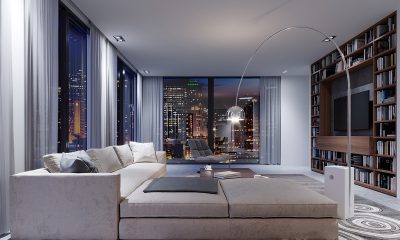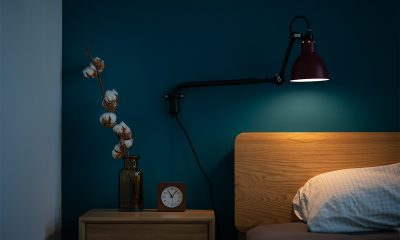General description
Portable artist lights are designed to provide appropriate illumination that supports artists’ visual needs for task visibility, color accuracy and luminance uniformity. The use of desk or floor lamps is intended to deliver lighting that is flexibly adaptable to task needs. Light is radiant energy which can produce a visual sensation by exciting the retina. This sensory interaction is an essential determinant of visual perception that allows the human brain to foster senses of the colors, shapes, shadows, highlights, patterns, and textures that make up the visual arts. The cascade of neurological activities arising as the human visual system carries out the complex processing of perceptual responses begins with incident light generated by a light source. Since the perceptual response is, ultimately, a construct of the brain, the signals to the brain will vary depending on the quantity and composition of incident light. That is to say, how the task surface (e.g., a canvas or a piece of art paper) is illuminated will fundamentally influence an artist’s aesthetic judgements.
Lighting technology
LED technology has now emerged as the clear choice for art studio lighting for a number of advantages and advancements that it holds over its predecessors (incandescent, halogen and compact fluorescent). LED products are widely known for their massive energy savings, long service life, lower maintenance costs, small source size, solid state durability, low disposal/recycling costs, and ability to provide instant light and fully controllable lumen output. While these attributes bring lighting to the forefront of performance, economics and sustainability, the most intriguing benefit of LED technology, when it comes to artistic applications, is its ability to precisely control the spectral power distribution (SPD) of the light source. The SPD describes distribution of radiant energy emitted by a source at the different wavelengths of the visible electromagnetic spectrum that extends from about 380 to 770 nanometers (nm). The color characteristics of a light source, namely color rendering and color temperature, are a function of the spectral power distribution. The inherent spectral controllability of LEDs makes it possible to emulate the characteristics of natural light which contains abundant energy across the entire visible spectrum.
Light distribution requirements
Selection of portable task lights requires an awareness of the task size and the configuration of the intended workstation. A large task plane challenges the photometric distribution of the task light. A vertical task surface generally needs to be illuminated by a floor lamp. Desk lamps are primarily designed to produce horizontal illuminance. Portable artist lights often need to illuminate across a substantial distance so as not to disturb the user. A higher lumen output is necessary to compensate for the distance as well as to address the higher illuminance requirement from the application. The maintained horizontal or vertical illuminance must not be less than 500 lux for painting works that involve critical color matching. Conventional desk and floor lamps usually fail to deliver this level of illuminance across an undisturbed distance. Portable artist lights need to incorporate flexibility for easy adjustment the light head. The light head is mounted on a gooseneck/articulating arm or an adjustable mechanism so that it can tilt, rotate and sweep side to side to achieve the desired directions and angles. Sturdy construction is an essential engineering requirement because a high-level stability is needed for stationary positioning of an unusually large LED head.
Lamp-based vs. integrated LED systems
The design of LED artist lights has veered away from the bulb-based configuration to adopt an integrated architecture. Traditional art lamps are fixture-plus-lamp systems which have their optical performance characteristics built into the light source itself and the fixture is essentially a holder with provision of simple optical control. These lamps have a poor illuminance uniformity that leads a high probability of compromised task performance. In contrast, integrated LED task lights exploit the directional nature of LEDs and a multi-source arrangement to enable better control of the distribution and higher optical delivery efficiencies. Integrated system design also allows a high efficiency thermal path to be created. The LED module is seamlessly interfaced to the heat sink, which the thermal load to be transferred from the LED junction to the ambient air via the shortest and largest possible thermal path. Thermal management is critical to the performance and useful life of LEDs. One of the important performance variables that are influenced by LED junction temperature is color stability which refers to the ability of a light source to maintain its SPD (and the color of emitted light) over time.
Optical design of integrated LED systems
Uniform illumination of the task surface is a fundamental need in art creation. Uneven distribution of task illuminance will not only cause eye fatigue, but more importantly, influence the critical color perception. The ratio of minimum illuminance to average illuminance over the practical painting surface should be as low as possible and never exceed 0.7 (or 1/1.4). An LED task light usually employs a large array of discrete SMD LEDs which are uniformly arranged across a metal core printed circuit board (MCPCB) to spread illuminances homogeneously over the painting surface through an opal diffuser or a lens array. In addition to control light distribution, secondary optics also serve to soften and/or shield the high luminance of LEDs for a glare-free visual environment. For the ultimate in visual comfort, the optical system may use the edge-lit design. An edge-lit LED panel light employs a hybrid architecture to completely remove the bright LED spots and achieve light distribution with superior homogeneity.

Color reproduction
Painting is the art of applying color to a solid surface. The critical importance of accurate color perception places high demand on the ability of a light source to render objects naturally. Color is not inherent in objects. How the objects will appear varies according to the interaction between the spectral power distribution of a light source and the spectral reflectance function of objects. The only controllable factor that influences perceptual response of color is the relative amount of radiation at each wavelength of the visible light spectrum. To deliver high color fidelity lighting, the light source must spread radiant energy fairly broadly and uniformly across the visible spectrum.
The color rendering index (CRI, or Ra outside of North America) is the most common metric to evaluate the ability of a light source to faithfully reproduce the object colors in comparison with an ideal or natural light source. A CRI of 95 is often considered the minimum acceptable value for painting tasks. However, this value does not necessarily indicate good color rendering because only eight color samples with low to moderate saturation are used to produce the CRI general index and six special color samples are not used in the calculation of the average. Four of these special color samples are saturated colors, one represents the color of foliage, and one represents an average Caucasian skin color. Among them the special index the value of R9, which is for a saturated red color, is often listed individually for evaluation and should be greater than 75. The special color rendering indices of other five color samples, however, should be observed as well. For more accurate assessment of the color quality of a light source, the IES TM-30 method which uses 99 color evaluation samples (CES) should be considered.
Spectral power distribution (SPD)
An LED chip is a semiconductor diode that inherently produces narrow-spectrum light. To produce white light from a single LED device, the narrow emission spectrum must be shifted and/or spread in wavelength. The monochromatic light produced through injection electroluminescence within a semiconductor chip partially or completely goes through a down conversion process. The majority of commercially available LEDs are blue-pump LEDs that utilize part of the blue light to excite phosphors spread over the inside of the encapsulant. The down-converted light is then mixed with blue photons that escape without going through the phosphor-conversion process to produce white light.
Phosphor-converted LEDs of this type generally have a high luminous efficacy but may not reflect all wavelengths equally. Most blue-pump LEDs exhibit a local peak in the blue region of the spectrum and do not have the right amount of energy in some spectral bands. Violet-pump LEDs produce high color rendering light by exciting red, green and blue phosphors with violet-producing LED chips. Phosphor-converted LEDs of this type exhibit visible spectrum radiation at all wavelengths of the spectrum, delivering a color rendering ability that is comparable to natural light.
Color temperature and uniformity
The spectral power distribution also establishes the color appearance of a light source. Art studio lighting is typically designed to approximate the ambience of daylight environment. Daylight delivers more spectral energy in shorter (blue) wavelengths and exhibits a correlated color temperature (CCT) or 5000K or greater. There is a linear relationship between the CCT and the dominant color in a painting. White light with a very high CCT (e.g., 6500K) is not recommended because it excessively enhances blue.
Color consistency is a critical detail in art studio lighting. All discrete LEDs must be sorted into chromaticity categories (so-called bins) before they are incorporated in a desk or floor lamp. The tighter the chromaticity binning, the closer the light emitted by each LED in that bin will appear. The binning tolerance is essential to color angular uniformity (variations of color within the beam of light) and fixture-to-fixture uniformity if multiple lights are used.
Flicker-free lighting
Portable LED task lights generally operate on AC power, which imposes tight line and load regulation by an AC-DC LED driver. The LED driver is typically designed as a switched mode power supply (SMPS) capable of delivering to the load a DC voltage and current compatible with the LED packages. Ripples (residuals of the AC input) in the DC current needs to be sufficiently low so as not to generate light flicker. The LED driver may incorporate control circuitry that supports multilevel switching or contiguous dimming.
















Loading...